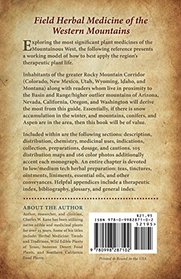Search -
Medicinal Plants of the Western Mountain States
Medicinal Plants of the Western Mountain States
Author:
Exploring the most significant plant medicines of the Mountainous West, the following reference presents a working model of how to best apply the region's therapeutic plant life. — Inhabitants of the greater Rocky Mountain Corridor (Colorado, New Mexico, Utah, Wyoming, Idaho, and Montana) along with readers whom live in proximity to the Basin and... more »
Author:
Exploring the most significant plant medicines of the Mountainous West, the following reference presents a working model of how to best apply the region's therapeutic plant life. — Inhabitants of the greater Rocky Mountain Corridor (Colorado, New Mexico, Utah, Wyoming, Idaho, and Montana) along with readers whom live in proximity to the Basin and... more »
ISBN-13: 9780998287102
ISBN-10: 0998287105
Publication Date: 6/1/2017
Pages: 456
Edition: First
Rating: ?
ISBN-10: 0998287105
Publication Date: 6/1/2017
Pages: 456
Edition: First
Rating: ?
0 stars, based on 0 rating
Genres:
- Health, Fitness & Dieting >> Alternative Medicine >> Herbal Remedies
- Science & Math >> Biological Sciences >> Botany
- Science & Math >> Biological Sciences >> Plants
- Science & Math >> Nature & Ecology >> Mountains




